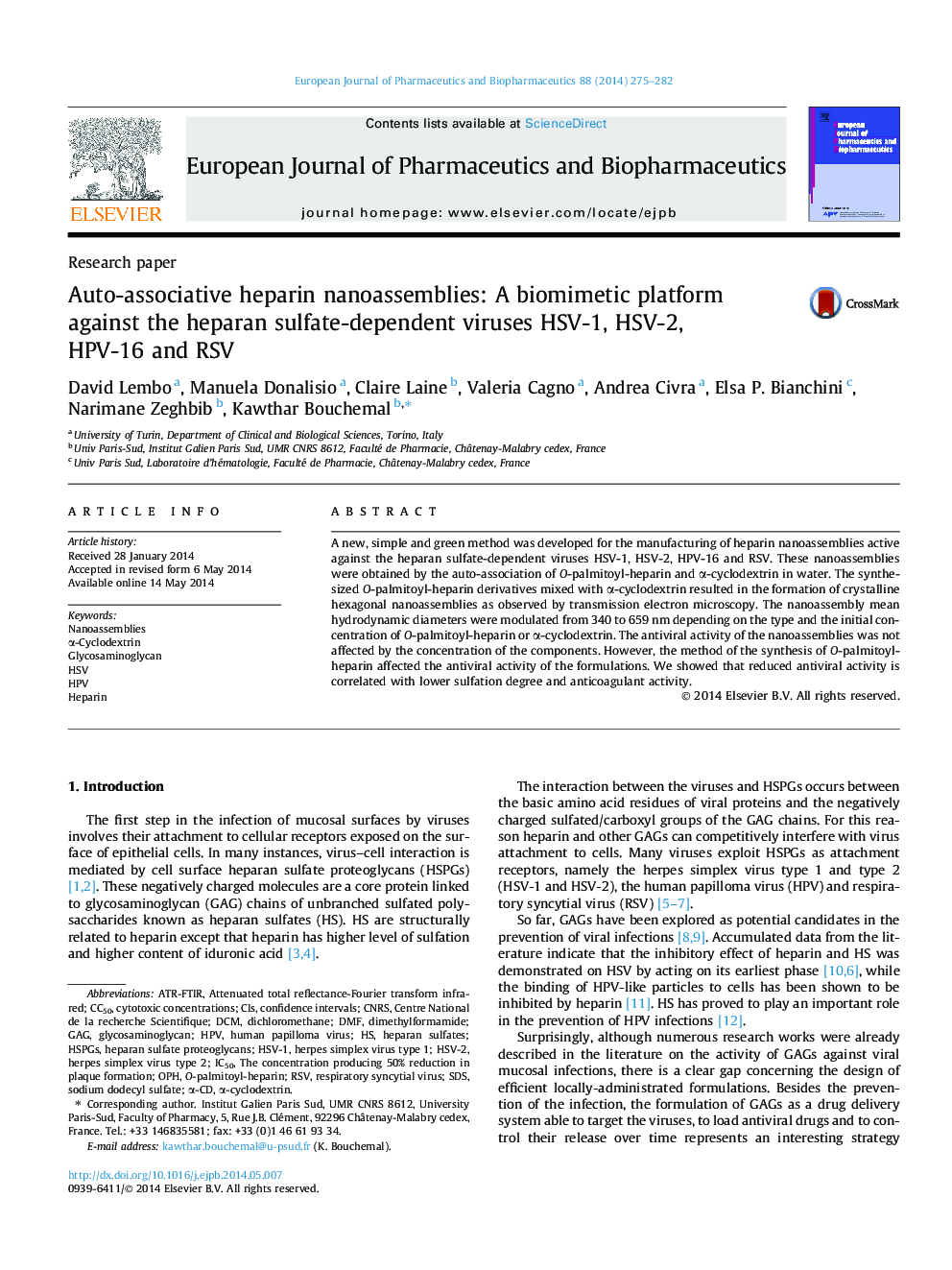| Article ID | Journal | Published Year | Pages | File Type |
|---|---|---|---|---|
| 2083607 | European Journal of Pharmaceutics and Biopharmaceutics | 2014 | 8 Pages |
•Heparin nanoassemblies were obtained by a new simple and green method.•They results from the association of O-palmitoyl-heparin (OPH) and α-cyclodextrin.•They showed antiviral activity against heparan-sulfate-dependent viruses.•The antiviral activity was affected by the method of the synthesis of OPH.•Reduced antiviral activity is correlated with lower sulfation degree.
A new, simple and green method was developed for the manufacturing of heparin nanoassemblies active against the heparan sulfate-dependent viruses HSV-1, HSV-2, HPV-16 and RSV. These nanoassemblies were obtained by the auto-association of O-palmitoyl-heparin and α-cyclodextrin in water. The synthesized O-palmitoyl-heparin derivatives mixed with α-cyclodextrin resulted in the formation of crystalline hexagonal nanoassemblies as observed by transmission electron microscopy. The nanoassembly mean hydrodynamic diameters were modulated from 340 to 659 nm depending on the type and the initial concentration of O-palmitoyl-heparin or α-cyclodextrin. The antiviral activity of the nanoassemblies was not affected by the concentration of the components. However, the method of the synthesis of O-palmitoyl-heparin affected the antiviral activity of the formulations. We showed that reduced antiviral activity is correlated with lower sulfation degree and anticoagulant activity.
Graphical abstractFigure optionsDownload full-size imageDownload high-quality image (117 K)Download as PowerPoint slide
